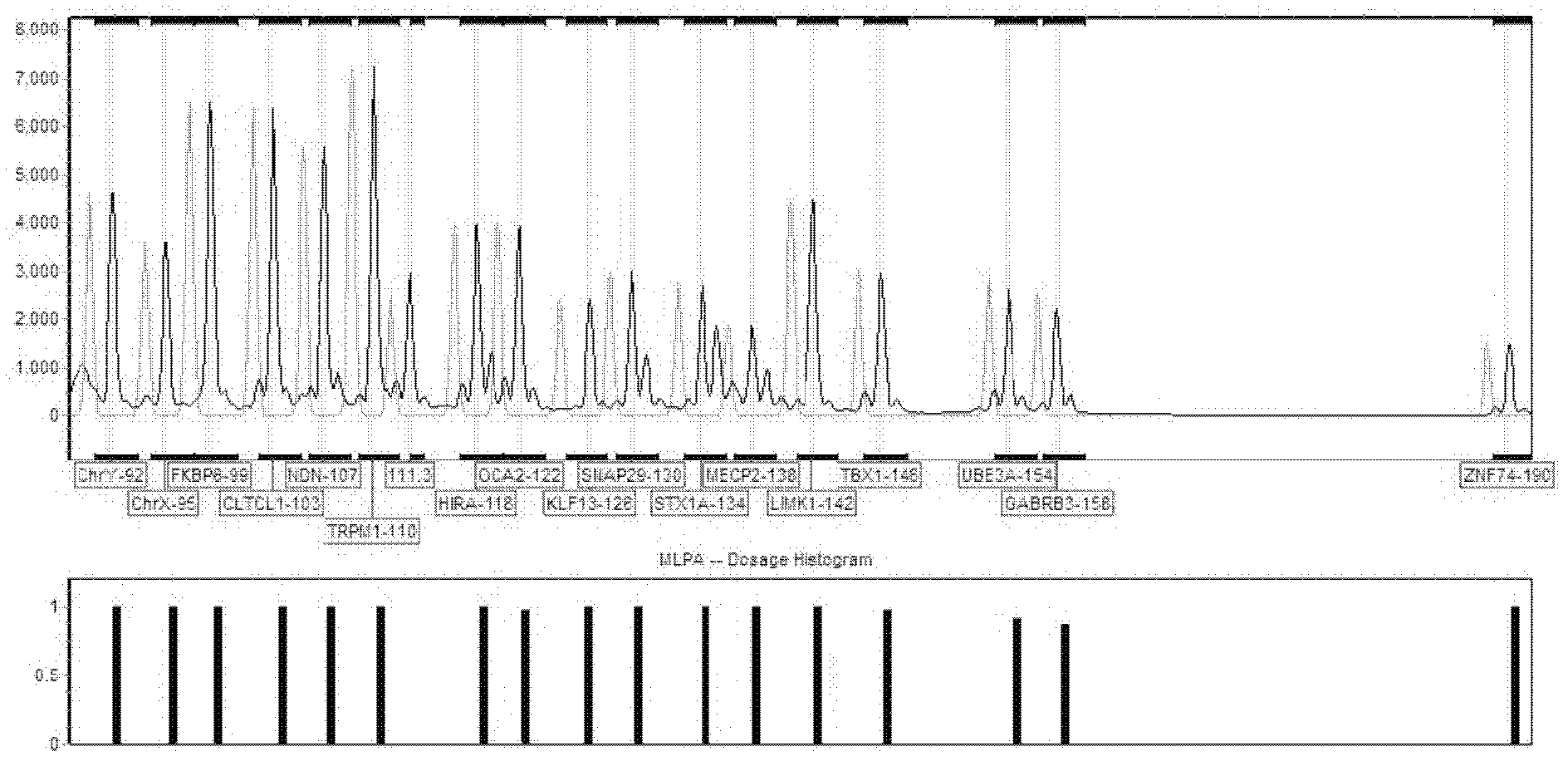Molecular combination probe for diagnosing and screening chromosome microdeletion syndrome
A technology of chromosome microdeletion and combined probes, which is applied in the determination/testing of microorganisms, recombinant DNA technology, DNA/RNA fragments, etc., and can solve problems such as difficult diagnosis
- Summary
- Abstract
- Description
- Claims
- Application Information
AI Technical Summary
Problems solved by technology
Method used
Image
Examples
Embodiment 1
[0048] Common chromosomal diseases and selection of key genes
[0049] refer to http: / / www.ncbi.nlm.nih.gov / sites / GeneTests / Review? db=GeneTests According to the description of the six syndromes of WS, 22Q11, PWS, AS, 15q13.3 microdeletion and Rett syndrome, the key genes or key regions were selected according to the description and relevant published literature reports. If the key genes or key regions have not been identified,
[0050] (1) Design of probe sequence
[0051] The selected target gene sequence is in http: / / genome.ucsc.edu / cgi-bin / hgBlat Obtain and distinguishably mark coding regions, SNPs and repeat sequences.
[0052] For each target gene, the probe consists of a left-half sequence and a right-half sequence. The 3' end is in sequence: phosphate label, right half-probe sequence, and right universal primer sequence. The left and right probe sequences are the same as the target sequence of the target gene, and can be directly linked under the action of ligas...
Embodiment 2
[0058] (1) Negative case control
[0059] Select normal population, QIAgen kit to extract whole genome DNA, conduct MLPA experiment, apply Genemarker Demo version 1.80 software for data analysis. The result is as image 3 shown.
[0060] (2) Positive case control
[0061]Nine cases of 22q11 syndrome were selected and verified by commercialized MLPA kits as patients with 22q11 syndrome as positive controls. After the whole genome DNA was extracted by the QIAgen kit, MLPA experiments were performed, and GenemarkerDemo version 1.80 software was used for data analysis (such as Figure 4 shown).
PUM
 Login to View More
Login to View More Abstract
Description
Claims
Application Information
 Login to View More
Login to View More - R&D
- Intellectual Property
- Life Sciences
- Materials
- Tech Scout
- Unparalleled Data Quality
- Higher Quality Content
- 60% Fewer Hallucinations
Browse by: Latest US Patents, China's latest patents, Technical Efficacy Thesaurus, Application Domain, Technology Topic, Popular Technical Reports.
© 2025 PatSnap. All rights reserved.Legal|Privacy policy|Modern Slavery Act Transparency Statement|Sitemap|About US| Contact US: help@patsnap.com



